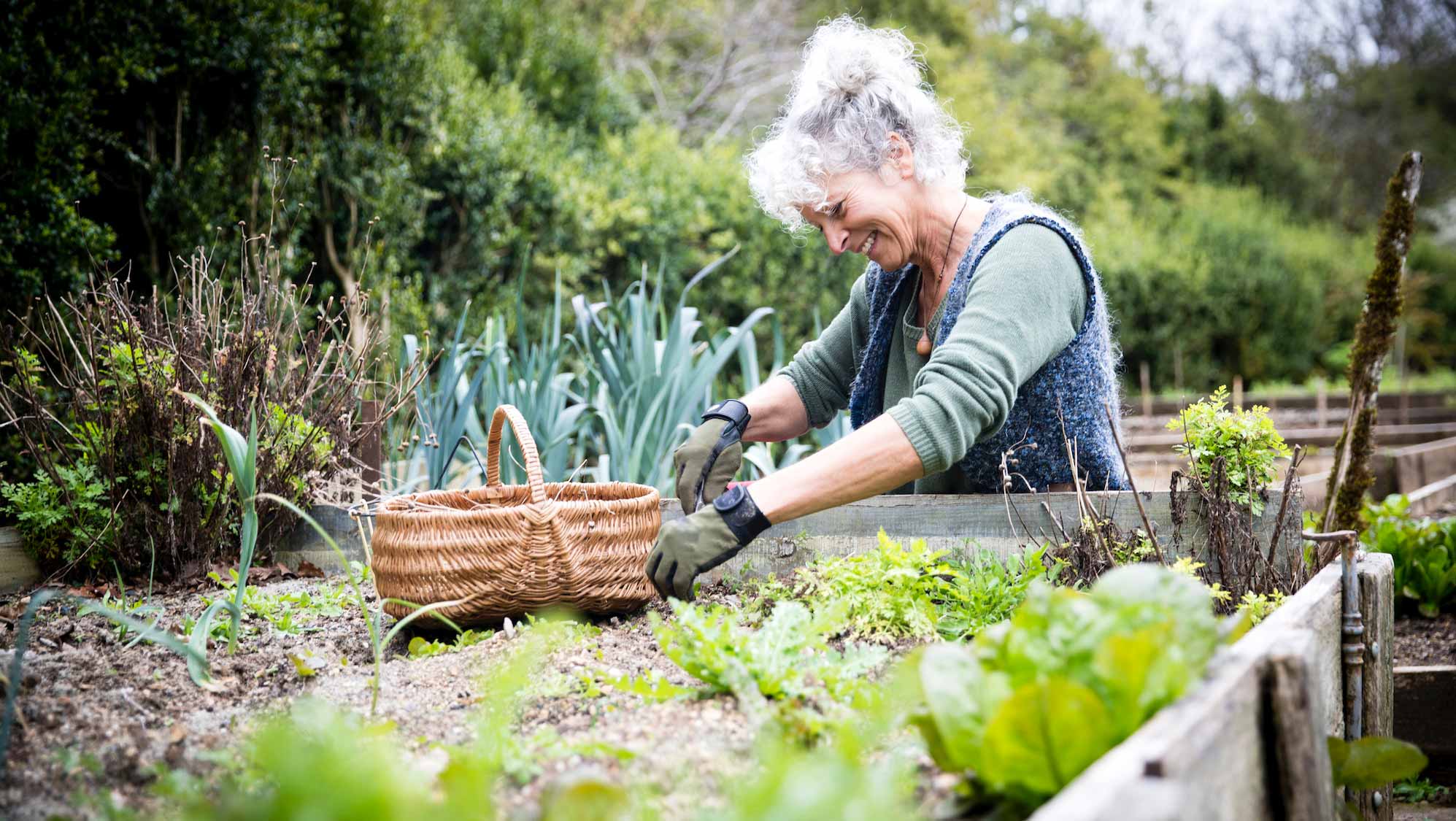
Getty Images
Last year, pandemic stay-at-home orders left many of us stuck indoors, with a lot of time on our hands. For a moment it felt like everyone and their mother was cultivating a sourdough starter and baking bread (and posting about it on social media). Many of us reverted to our preschool love of arts and crafts. And combining those urges to make food and get messy, a lot of folks took up gardening.
There’s something particularly satisfying about digging through the soil to plant flowers or vegetables, and spending hours in the fresh air. But if you’ve been gardening for a year or longer, and have gotten over the simple thrill of watching your plants thrive, it may be time to level up—and we have a few ideas for ways to get the most out of your garden.
1. Germinate your own seedlings for transplanting
“If you would like to save time and give plants a head start to get established faster, use seedlings or rooted cuttings from a healthy plant,” says Gladys Mbofung-Curtis, plant scientist for Garden Safe.
Start the seedlings or rooted cutting propagation indoors. Before transplanting, Mbofung-Curtis says the seedlings need to be acclimatized to outdoor conditions, which means taking them out into full sunlight for two to three hours a day. Increase the number of hours daily until they are outside for a whole day. Then they are ready to be transplanted.
Mbofung-Curtis recommends mapping out your raised bed space and deciding where you want to place each plant before transplanting them.
“After transplanting, water thoroughly and use leaf mulch to cover the soil surface. This will smother any weed seeds that germinate from the soil,” she says. “Make sure to use leaf mulch that is not moldy to avoid transferring fungi to your plants.”
She says it’s a good idea to add some fertilizer at transplanting to help minimize transplant shock. Make sure to choose the right fertilizer to match the plants you are growing.
2. Make your own leaf mulch
Speaking of leaf mulch, it’s a great and inexpensive way to combat one of the great annoyances of gardening: weeds.
“During the summer months, any leaf litter that is collected can be shredded and stored in a pile to be used in the spring after decomposition,” says Mbofung-Curtis.
Spread a 2- to 3-inch layer of the decomposed leaf litter around the plants in your garden to help smother weeds and add nutrients to your plants and soil.
3. Create a succession planting schedule (to extend your crop yield)
The best way to maximize your vegetable garden’s harvest is through succession planting, which basically means staggering your planting times so that you will have crops from spring through late fall.
“This requires starting seeds at different time points such that when a growing herb or crop is spent, you can replace it with a different one that is still in a seedling growth stage,” says Mbofung-Curtis. “For example, spring tomatoes followed by summer sweet corn that could be succeeded by a fall onion or lettuce.”
The first step is to identify your area’s plant hardiness zone, as seen on the USDA website. Each zone is classified based on its average minimum temperature, to help you figure out which plants will thrive in your climate.
Next, determine whether you are sowing directly into the soil or growing plants in containers or raised beds. Consider how much sunlight the location will receive—which will change according to the time of year.
“Most herbs need a sunny location. Only a few, such as angelica, woodruff, and sweet cicely, grow well in partial shade. Veggies require at least six to eight hours of sunlight a day for optimal growth. For a mixed veggie-herb garden, you will need a full-sunlight location,” says Mbofung-Curtis.
4. Preserve your garden’s bounty for the offseason
Folks who have well-established victory gardens enjoy their harvests year-round. You can, too, by venturing into preserving.
“There are several preservation methods you can use, including canning, freezing, drying, and fermenting,” says Amie Best, division vice president of research and development, home and garden, at Spectrum Brands.
We love this guide to fermenting vegetables from gardening blogger Megan Cain. The National Center for Home Food Preservation is also a great resource for how to can vegetables.
When bringing produce indoors, be careful to not bring in unwelcome garden pests.
“Treat your edibles with products like Garden Safe Insecticidal Soap Insect Killer ($5.98, Amazon) in the days before you harvest to ensure bugs and insect damage isn’t a problem,” says Best. “Spray on fruits and vegetables right up until you pick them—just rinse thoroughly before eating.”
The post 4 Ways To Take Your Gardening Game to the Next Level appeared first on Real Estate News & Insights | realtor.com®.
No comments:
Post a Comment